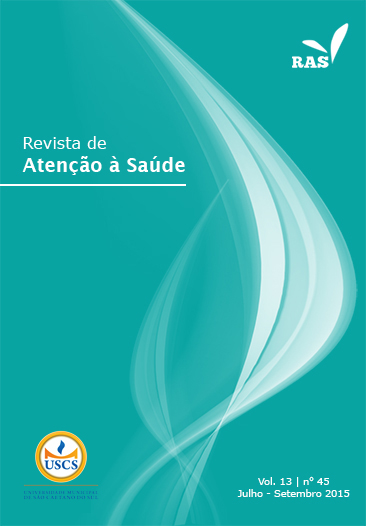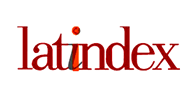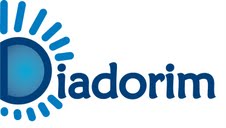FOOD HABITS AND ASSOCIATED FACTORS IN PUBLIC SERVANTS
DOI:
https://doi.org/10.13037/ras.vol13n45.2678Keywords:
Food Habits, WorkersAbstract
Introduction: Food is essential for the functioning of the physical and biological activities of the body.Studies have shown that multiple factors may influence food intake of an individual. Furthermore, theliterature indicates regional differences on dietary habits. Thus, identifying factors associated with dietaryhabits of each region may contribute to direct local strategies to improve this situation. Objective: Toanalyze the prevalence and factors associated with inadequate intake of fruits, vegetables, soft drinks andfrying of public servants of the State University of Northern Parana (UENP). Methods: The study group asformed of 147 servers and teachers from UENP campus of Jacarezinho (PR), 73 females and 74 males agedbetween 18 and 64 years old. Dietary habits were assessed by the food frequency questionnaire DIPS (FoodConsumption Patterns), level of physical activity using the IPAQ 8, and questionnaire and socioeconomicstatus by the Brazilian Association of Research Companies questionnaire. Results: Increasing age showedsignificantly decrease the inadequate consumption of fruits, vegetables, frying and sodas. The lowermiddlesocioeconomic status was associated with irregular consumption of fruits and vegetables (OR=2,453:CI=1,134-0,303 and OR=3,545:CI=1,370-9,173, respectively). Inadequate consumption of fruitwas higher for insufficiently active individuals (OR=2,683:CI=1,110-6,489). Conclusion: The frequencyof adults with unhealthy eating habits and their association with age, socioeconomic status and physicalactivity level shows the need to promote positive behavior and healthy lifestyle among the servers.Downloads
References
1. Angelis RC De. Novos conceitos em nutrição. Reflexões a respeito do elo dieta e saúde. Arq Gastroenterol. 2001;38(4):269-71.
2. Attorp A, Scott JE, Yew AC, Rhodes RE, Barr SI, Naylor P-J. Associations between socioeconomic, parental and home environment factors and fruit and vegetable consumption of children in grades five and six in British Columbia, Canada. BMC Public Health. 2014;fev. 11;14(1):150.
3. Neumann AICP, Martins IS, Marcopito LF, Araujo EAC. Padrões alimentares associados a fatores de risco para doenças cardiovasculares entre residentes de um município brasileiro. Rev Panam Salud Pública. 2007;22(5):329-39.
4. Fisberg RM, archioni, Maria DL, Colucci ACA. Avaliação do consumo alimentar e da ingestão de nutrientes na prática clínica. Arq Bras Endocrinol Metabol. 2009;53(5):617-24.
5. Santos IS, Duarte EC. Fatores de risco e proteção para doenças crônicas não transmissíveis na população adulta brasileira. 2009;43(sup.2):5-6.
6. Shigihara M, Obara T, Nagai M, Sugawara Y, Watanabe T, Kakizaki M, et al. Consumption of fruits, vegetables, and seaweeds (sea vegetables) and pancreatic cancer risk: The Ohsaki Cohort Study. Cancer Epidemiol. 2014 fev. 9;38(2):129-36.
7. Cho SW, Kim JH, Lee SM, Lee SM, Choi EJ, Jeong J, et al. Effect of 8-week nutrition counseling to increase phytochemical rich fruit and vegetable consumption in korean breast cancer patients : a randomized controlled trial. Clin Nutr Res. 2014;3:39-47.
8. Jaime PC, Figueiredo ICR, Moura EC, Malta DC. Fatores associados ao consumo de frutas e hortaliças no Brasil, 2006. Rev Saúde Pública. 2009;43(sup.2):57-64.
9. World health organization. The world health report 2002. Reducing risks, promoting healthy life; Geneva: World Health Organization; 2002.
10. Secretaria de vigilância em saúde/secretaria de gestão estratégica e participativa ministério da saúde. VIGITEL Brasil 2011: vigilância de fatores de risco e proteção para doenças crônicas por inquérito telefônico. Brasília: Ministério da Saúde; 2012.
11. Overby NC, Lillegaard ITL, Johansson L, Andersen LF. High intake of added sugar among Norwegian children and adolescents. Public Health Nutr. 2004;7(2):285-93.
12. Miura K, Giskes K, Turrell G. Socio-economic differences in takeaway food consumption among adults. Public Health Nutr. 2012;15(2):218-26.
13. Zanini RDV, Muniz LC, Schneider BC, Tassitano RM, Feitosa WMN, Gonzalez-Chica DA. Consumo diário de refrigerantes, doces e frituras em adolescentes do Nordeste brasileiro. Cien Saude Colet. 2013;18(12):3739-50.
14. Ramalho AA, Dalamaria T, Souza OF. Consumo regular de frutas e hortaliças por estudantes universitários em Rio Branco, Acre, Brasil : prevalência e fatores associados. Cad Saúde Pública. 2012;28(7):1405-13.
15. World Health organization. Global School-based Student Health Survey [Internet]. 2004. Dispnoível em: <http://www.who. int/school_youth_health/media/en/gshs_chile_questionnaire2004.pdf> [acesso em 10 out. 2013].
16. Romanzini M, Reichert FF, Lopes A da S, Petroski EL, Farias Junior JC. Prevalência de fatores de risco cardiovascular em adolescentes. Cad Debate. 2008;24(11):2573-81.
17. Viana V. Psicologia, saúde e nutrição: Contributo para o estudo do comportamento alimentar. Análise Psicológica. 2002;4:611-24.
18. Alves HJ, Boog MCF. Representações sobre o consumo de frutas, verduras e legumes entre fruticultores de zona rural. Rev Nutr. 2008;21(6):705-15.
19. Viebig RF, Valero MP, Scazufca M, Menezes PR. Consumo de frutas e hortaliças por idosos de baixa renda na cidade de São Paulo. Rev Saúde Pública. 2009;43(5):806-13.
20. Jaime PC, Monteiro CA. Consumo de frutas e hortaliças na população adulta brasileira, 2003. Cad Saude Publica. 2005;21(s-19):19-24.
21. Toral N, Slater B, Silca MV. Consumo alimentar e excesso de peso de adolescentes de Piracicaba, São Paulo. Rev Nutr. 2007;20(5):449-59.
22. Figueiredo ICR, Jaime PC, Monteiro CA. Fatores associados ao consumo de frutas, legumes e verduras em adultos da cidade de São Paulo Factor. Rev Saúde Pública. 2008;42(5):777-85.
23. Forshee RA, Storey ML. The role of added sugars in the diet quality of children and adolescents. J Am Coll Nutr. 2001;20(1):32-43.
24. Dinour LM, Bergen D, Yeh M-C. The food insecurity-obesity paradox: a review of the literature and the role food stamps may play. J Am Diet Assoc. 2007 Nov;107(11):1952-61.
25. Oliveira LPM, Assis AMO, Silva M da Co, Santana MLP, Santos NS, Pinheiro SMC, et al. Fatores associados a excesso de peso e concentração de gordura abdominal em adultos na cidade de Salvador, Bahia, Brasil. Factors associated with overweight and abdominal fat in adults in Salvador, Bahia State, Brazil. Cad Saúde Pública. 2009;25(3):570-82.
26. Campos MTFS, Monteiro JBR, Ornelas APRC. Fatores que afetam o consumo alimentar e a nutrição do idoso. Rev Nutr. 2000;13(2):157-65.
27. Popkin BM. Dynamics of the nutrition transition and its implications for the developing world. Forum Nutr. 2003;56:262-4.
28. Gillman MW, Pinto BM, Tennstedt S, Glanz K, Marcus B, Friedman RH. Relationships of physical activity with dietary behaviors among adults. Prev Med (Baltim). 2001;32(3):295-301.
29. Dutton GR, Napolitano MA, Whiteley JA, Marcus BH. Is physical activity a gateway behavior for diet? Findings from a physical activity trial. Prev Med (Baltim). 2008 Apr;46(3):216-21.
Downloads
Published
Issue
Section
License
Copyright (c) 2015 João Paulo Farias, Waynne Ferreira Faria, Antonio Stabelini Neto, Aline Miguel de Campos Olímpio, Renan Camargo Corrêa, Jéssica Sartini Sena, Rui Gonçalves Marques Elias

This work is licensed under a Creative Commons Attribution-NonCommercial-NoDerivatives 4.0 International License.
Policy Proposal for Journals offering Free Delayed Access
Authors who publish in this magazine agree to the following terms:
- Authors maintain the copyright and grant the journal the right to the first publication, with the work simultaneously licensed under a Creative Commons Attribution License after publication, allowing the sharing of the work with recognition of the authorship of the work and initial publication in this journal.
- Authors are authorized to assume additional contracts separately, for non-exclusive distribution of the version of the work published in this magazine (eg, publishing in institutional repository or as a book chapter), with the acknowledgment of the authorship and initial publication in this journal.
- Authors are allowed and encouraged to publish and distribute their work online (eg in institutional repositories or on their personal page) at any point before or during the editorial process, as this can generate productive changes, as well as increase impact and citation of the published work (See The Effect of Open Access).









